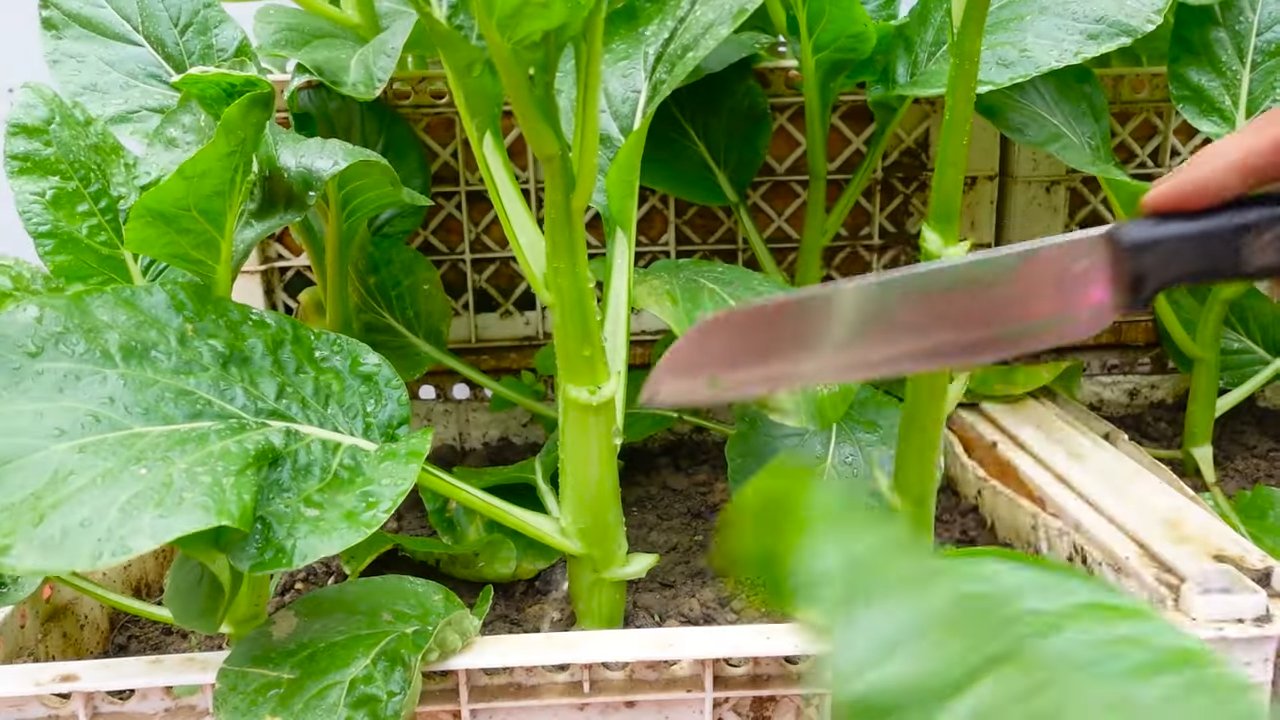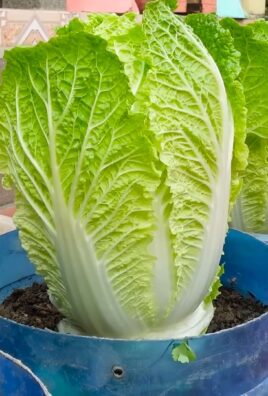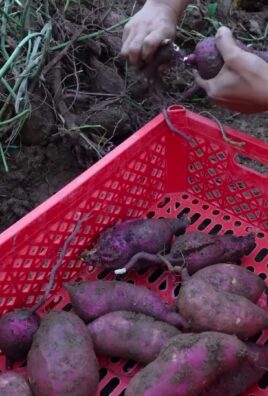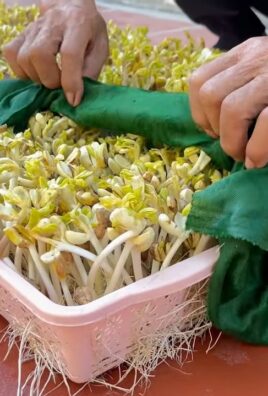Backyard vegetable gardening ideas – are you dreaming of fresh, homegrown tomatoes bursting with flavor, crisp cucumbers straight from the vine, and vibrant herbs to elevate your cooking? I know I am! Imagine stepping outside your back door and harvesting a colorful array of organic produce, all nurtured by your own hands. This isn’t just a fantasy; it’s an achievable reality with the right backyard vegetable gardening ideas and a little DIY spirit!
For centuries, cultivating our own food has been a cornerstone of human civilization. From ancient Roman kitchen gardens to the victory gardens of World War II, growing vegetables at home has provided sustenance, fostered community, and connected us to the earth. Today, with increasing concerns about food security, sustainability, and the quality of what we eat, the allure of backyard vegetable gardening is stronger than ever.
But let’s be honest, getting started can feel overwhelming. Where do you begin? What do you plant? How do you deal with pests? That’s where this DIY guide comes in! I’m going to share some simple yet effective tricks and hacks that will transform your backyard into a thriving vegetable oasis, even if you’re a complete beginner. These backyard vegetable gardening ideas will not only save you money at the grocery store but also provide you with a rewarding and therapeutic hobby. So, grab your gardening gloves, and let’s get growing!

Your Own Vegetable Garden: How to Succeed in the Garden!
Hello, garden friends! I am thrilled that you have decided to create your own vegetable garden. There is nothing better than harvesting fresh, homegrown vegetables and knowing exactly where they come from. Don’t worry, it’s not as difficult as you might think! I will show you, step by step, how you can make your dream of having your own vegetable garden a reality.
Planning is Everything
Before you get started, good planning is important. Think about what you would like to grow and how much space you have available.
Location Selection: Vegetables need sun! Choose a location that gets at least six hours of sun per day.
Soil Condition: The soil should be loose, rich in humus, and well-drained.
Size of the Garden: It’s better to start small and expand your garden later as you gain more experience.
Vegetable Selection: Choose vegetable varieties that you enjoy eating and that are suitable for your climate.
Cultivation Plan: Create a cultivation plan to make the best use of the space and to take crop rotation into account.
Step-by-Step Guide to Your Vegetable Garden
Preparing the Soil:
- First, remove all stones, roots, and weeds from the area. This is a bit of work, but it’s worth it!
- Loosen the soil with a digging fork or a spade. Be careful not to turn the soil over completely, in order to protect the soil life.
- Improve the soil with compost, rotted manure, or horn shavings. This provides your vegetables with the necessary nutrients.
- Rake the soil smooth to create an even surface.
Creating the Beds:
- You can either create ground-level beds or build raised beds. Raised beds are particularly easy on your back and warm up faster.
- Mark the beds with stakes and string.
- If you build raised beds, ensure good drainage, for example, with a layer of gravel or branches.
Sowing or Planting Vegetables:
- Find out the sowing or planting times for the individual vegetable varieties.
- Sow the seeds according to the instructions on the seed packet.
- Plant the young plants with sufficient distance between them.
- Water the seeds or young plants well after sowing or planting.
Caring for the Vegetable Garden:
- Watering: Water regularly, especially during dry spells. It’s best to water in the morning so the plants can dry off by the evening.
- Weeding: Remove weeds regularly so they don’t take nutrients away from your vegetables.
- Fertilizing: Fertilize your vegetables regularly with organic fertilizer, e.g., nettle tea or compost tea.
- Pest Control: Check your plants for pests regularly. If necessary, you can use natural pest control methods.
- Mulching: Cover the soil with mulch material, e.g., straw or grass clippings. This keeps the soil moist, suppresses weeds, and protects against erosion.
Vegetable Selection: What Should Go in the Garden?
The choice of vegetables naturally depends on your personal preferences. Here are a few ideas for beginners:
Lettuce: Lettuce is easy to grow and grows quickly.
Radishes: Radishes are also fast-growing and ideal for starting out.
Zucchini: Zucchini are low-maintenance and provide a rich harvest.
Tomatoes: Although tomatoes are a bit more demanding, even beginners can succeed in growing them with the right care.
Herbs: Herbs like parsley, chives, and basil are easy to grow and enhance any dish.
Bush Beans: Bush beans are robust and yield a good harvest.
Building a Raised Bed Yourself: A Guide
A raised bed is a great thing! It is not only easy on your back but also warms up faster than a ground-level bed, which extends the vegetable growing season. Here I will show you how you can build a raised bed yourself:
Materials:
- Wooden planks (e.g., larch or Douglas fir)
- Wooden posts
- Screws or nails
- Wire mesh (against voles)
- Dimpled sheeting (optional, to protect the wood)
- Drainage material (e.g., gravel or branches)
- Soil and compost
Tools:
- Saw
- Drill or hammer
- Screwdriver or hammer
- Staple gun (for the dimpled sheeting)
- Shovel
Step-by-Step Instructions:
- Cut the wood: Cut the wooden planks to the desired length. You can determine the size of the raised bed yourself. I recommend a height of at least 80 cm (about 31.5 inches) so you can work comfortably.
- Build the frame: Screw or nail the wooden planks together to form a frame. Make sure the corners are stable.
- Attach the posts: Fasten the wooden posts to the inside of the frame. The posts provide additional stability.
- Attach the wire mesh: Fasten the wire mesh to the bottom of the raised bed to protect it from voles.
- Attach the dimpled sheeting (optional): Staple the dimpled sheeting to the inside walls of the raised bed to protect the wood from moisture.
- Fill in drainage: Fill a layer of drainage material (e.g., gravel or branches) into the raised bed.
- Fill in soil and compost: Fill the raised bed with a mixture of soil and compost.
- Plant: Plant your favorite vegetables in the raised bed.
Observe Crop Rotation: For Healthy Plants and a Rich Harvest
Crop rotation is an important aspect of growing vegetables. It means that you change the types of vegetables in your garden beds each year. This has several advantages:
- Fewer pests and diseases: If you grow different types of vegetables each year, pests and diseases have less chance to spread.
- Better soil health: Different vegetable varieties draw different nutrients from the soil. By rotating the vegetables, the soil remains healthy and fertile.
- Higher yields: Through crop rotation, you can achieve higher yields.
There are different systems for crop rotation. a simple system is to divide the vegetable varieties into heavy feeders, medium feeders, and light feeders.
- Heavy feeders: Tomatoes, cucumbers, zucchini, cabbage
- Medium feeders: Lettuce, spinach, carrots, onions
- Light feeders: Radishes, peas, beans
In the first year, you plant heavy feeders, in the second year medium feeders, and in the third year light feeders. In the fourth year, you start all over again.
Natural Pest Control: How to Do It Without Chemicals
There are many natural ways to control pests in the vegetable garden. Here are a few tips:
Promote beneficial insects: Attract beneficial insects like ladybugs, lacewings, and parasitic wasps to your garden. They eat pests like aphids and caterpillars.

Conclusion
So, there you have it! Transforming your backyard into a thriving vegetable garden is not only achievable, but also incredibly rewarding. We’ve explored a range of backyard vegetable gardening ideas, from simple container gardens perfect for small spaces to elaborate raised beds that maximize yield. The beauty of this endeavor lies in its adaptability – you can tailor your garden to fit your lifestyle, available space, and personal preferences.
Why is this DIY approach a must-try? Beyond the obvious benefit of fresh, organic produce at your fingertips, creating your own vegetable garden offers a unique connection to nature. It’s a therapeutic activity that reduces stress, promotes physical activity, and fosters a deeper appreciation for the food we eat. Imagine stepping outside your back door to harvest sun-ripened tomatoes for a salad, or snipping fresh herbs to season your favorite dish. The taste difference alone is worth the effort!
But the benefits extend beyond personal enjoyment. By growing your own vegetables, you’re reducing your carbon footprint by minimizing transportation and packaging. You’re also contributing to a more sustainable food system and promoting biodiversity in your own backyard. Plus, it’s a fantastic way to teach children about where their food comes from and the importance of healthy eating habits.
Looking for variations? Consider incorporating companion planting techniques to naturally deter pests and improve soil health. Marigolds, for example, are excellent for repelling nematodes, while basil can enhance the flavor of tomatoes. You could also experiment with vertical gardening to maximize space and add visual interest to your backyard. Think climbing beans on a trellis or strawberries cascading from hanging baskets. Another fun idea is to create a themed garden, such as a pizza garden with tomatoes, basil, oregano, and peppers, or a salsa garden with tomatoes, onions, cilantro, and jalapenos.
Don’t be afraid to get creative and personalize your garden to reflect your own unique style and preferences. Use recycled materials to build raised beds, add decorative elements like garden gnomes or wind chimes, and create a relaxing seating area where you can enjoy the fruits (and vegetables!) of your labor.
We wholeheartedly encourage you to embark on this exciting journey of creating your own backyard vegetable garden. Start small, experiment with different techniques, and don’t be discouraged by initial setbacks. Gardening is a learning process, and every season brings new opportunities to improve and refine your skills.
Most importantly, we want to hear about your experiences! Share your photos, tips, and challenges in the comments below. Let’s create a community of passionate gardeners who inspire and support each other. What are you waiting for? Grab your gardening gloves, get your hands dirty, and start growing your own delicious and nutritious vegetables today! Let us know what backyard vegetable gardening ideas worked best for you!
Frequently Asked Questions (FAQ)
What if I have limited space for a vegetable garden?
Don’t let limited space deter you! Container gardening is an excellent solution for small backyards, patios, balconies, or even rooftops. Choose dwarf varieties of vegetables that are well-suited for containers, such as bush beans, cherry tomatoes, peppers, and herbs. Use high-quality potting mix and ensure your containers have adequate drainage. Vertical gardening is another space-saving option. Consider using trellises, hanging baskets, or stacked planters to maximize your growing area. You can even grow vegetables in repurposed items like old tires, pallets, or plastic bottles. The key is to be creative and make the most of the space you have.
What are the easiest vegetables to grow for beginners?
For novice gardeners, some vegetables are easier to grow than others. These include:
* **Lettuce:** Grows quickly and can be harvested multiple times.
* **Radishes:** Mature in just a few weeks and are relatively pest-free.
* **Green Beans:** Productive and easy to harvest.
* **Zucchini:** Prolific and requires minimal maintenance.
* **Tomatoes:** Choose determinate varieties for easier management.
* **Peppers:** Relatively easy to grow in warm climates.
* **Cucumbers:** Can be grown on trellises to save space.
* **Herbs:** Many herbs, such as basil, mint, and oregano, are easy to grow in containers or in the ground.
Start with a few of these easy-to-grow vegetables and gradually expand your garden as you gain experience.
How much sunlight do vegetables need?
Most vegetables require at least six hours of direct sunlight per day to thrive. However, some vegetables, such as lettuce, spinach, and kale, can tolerate partial shade. Observe your backyard throughout the day to determine which areas receive the most sunlight and plan your garden accordingly. If your backyard is mostly shady, consider growing shade-tolerant vegetables or using grow lights to supplement natural sunlight.
What type of soil is best for vegetable gardening?
Vegetables prefer well-drained, fertile soil that is rich in organic matter. If your soil is heavy clay or sandy, amend it with compost, aged manure, or other organic materials to improve its texture and drainage. You can also conduct a soil test to determine the pH level and nutrient content of your soil. Most vegetables prefer a slightly acidic soil pH of around 6.0 to 7.0. Amend your soil as needed to achieve the optimal pH level.
How often should I water my vegetable garden?
The frequency of watering depends on several factors, including the type of vegetables you are growing, the weather conditions, and the type of soil you have. As a general rule, water deeply and less frequently, rather than shallowly and more often. This encourages deep root growth, which makes plants more drought-tolerant. Check the soil moisture regularly by sticking your finger into the soil. If the top inch of soil feels dry, it’s time to water. Avoid overwatering, as this can lead to root rot and other problems. Consider using a soaker hose or drip irrigation system to deliver water directly to the roots of your plants.
How can I protect my vegetable garden from pests and diseases?
There are several ways to protect your vegetable garden from pests and diseases without using harmful chemicals. These include:
* **Companion Planting:** Plant herbs and flowers that attract beneficial insects and repel pests.
* **Crop Rotation:** Rotate your crops each year to prevent the buildup of pests and diseases in the soil.
* **Handpicking:** Remove pests by hand and dispose of them properly.
* **Row Covers:** Use row covers to protect plants from insects and other pests.
* **Organic Pesticides:** Use organic pesticides, such as neem oil or insecticidal soap, to control pests.
* **Good Sanitation:** Remove diseased plants and debris from your garden to prevent the spread of diseases.
* **Watering Practices:** Avoid overhead watering, which can create a humid environment that promotes fungal diseases.
How do I fertilize my vegetable garden?
Vegetables need nutrients to grow and produce healthy crops. You can fertilize your vegetable garden with organic or synthetic fertilizers. Organic fertilizers, such as compost, aged manure, and bone meal, release nutrients slowly and improve soil health. Synthetic fertilizers provide nutrients quickly but do not improve soil health. Follow the instructions on the fertilizer label carefully to avoid over-fertilizing, which can damage plants. Side-dress your plants with fertilizer every few weeks during the growing season.
When is the best time to harvest my vegetables?
The best time to harvest your vegetables depends on the type of vegetable you are growing. Generally, vegetables are ready to harvest when they are fully ripe and have reached their optimal size and color. Check the seed packet or plant tag for specific harvesting instructions. Harvest vegetables in the morning, when they are at their peak flavor and moisture content. Handle vegetables gently to avoid bruising or damaging them.




Leave a Comment